
The Rock of Gibraltar, an original Pillar of Hercules

Gibraltar is a small slice of Britain on the southern tip of Spain, a fortified rock that has been British for longer than America has been American. Its economy is mainly based around banking, shipping and tourism, and it has to be self-sufficient in electricity and water, as cooperation with Spain is not always guaranteed. Both the British and the Spanish accuse each other of hypocrisy when dealing with the possibility of returning Gibraltar to Spain, or Ceuta and Melilla to Morocco.
I went to Gibraltar at the start and the end of my time working in Cádiz in early 2013, first for a day trip and then as my departure point to fly back home to Aberdeen. I was really pleased to have the chance to visit, having been denied ten years earlier on my way back to Valencia, after awful food poisoning contracted in Morocco. Even during my January visit the temperature was mild and it was an easy place to explore.

Looking across the Straits of Gibraltar from Europe to Africa. At the end of the last ice age, this area may have been the site of the world’s largest waterfall, as the Atlantic Ocean brimmed over and filled the Mediterranean. Now it is one of the world’s busiest shipping lanes. At its narrowest, there are only nine miles of water separating the two continents.
The Rock of Gibraltar itself, one of the two Pillars of Hercules, guarding the entrance to the Mediterranean Sea. This is the view from La Linea, the town on the Spanish side, where I parked my rental car and started walking towards the border.

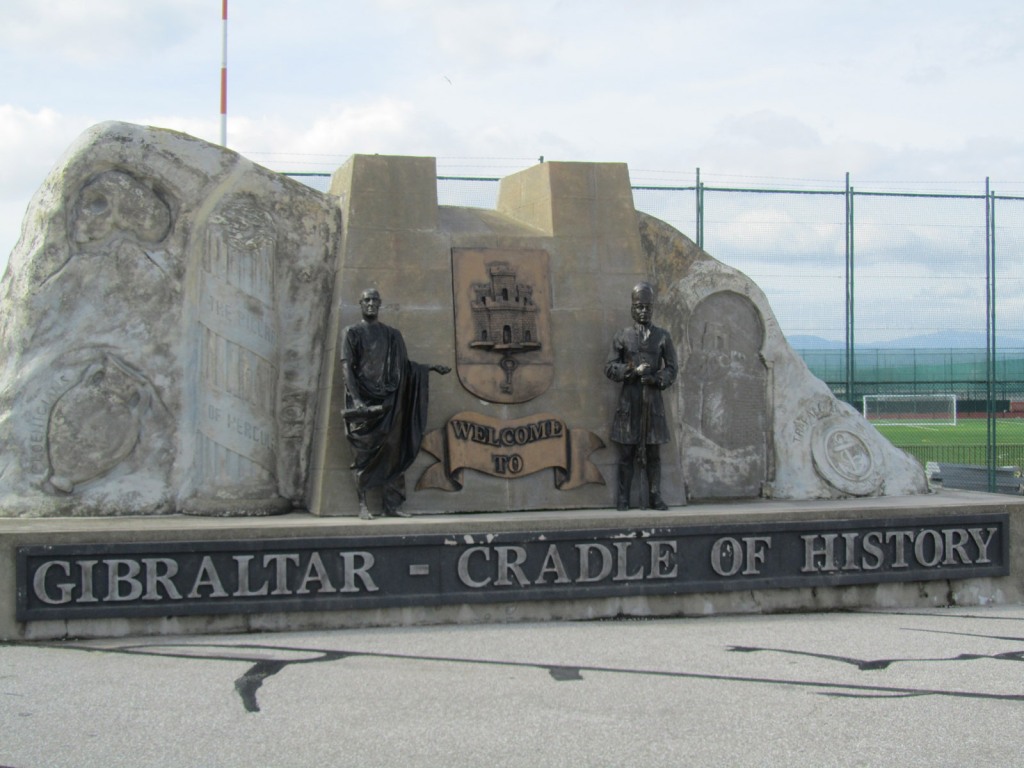
After you flash your British passport at the border guard and waltz over the runway, this sculpture welcomes you to the Cradle of History. Gibraltar, or “Gib” for those in the know, has changed hands a number of times over the centuries.
Immediate reminders of Britain pop up as soon as you are in to Gibraltar – what could be more British than a London phone box on Winston Churchill Avenue?


The Union Flag flies from the Moorish Castle at the city walls. The Tower of Homage seen here was built in the 14th century, towards the end of the Moorish Occupation, during which much of Spain was Islamic for over seven hundred years.
Grand Casemates Square is the first stop for many arrivals on foot, nestled just within the fortified walls. I had fish and chips in one of the cafes – lovely.
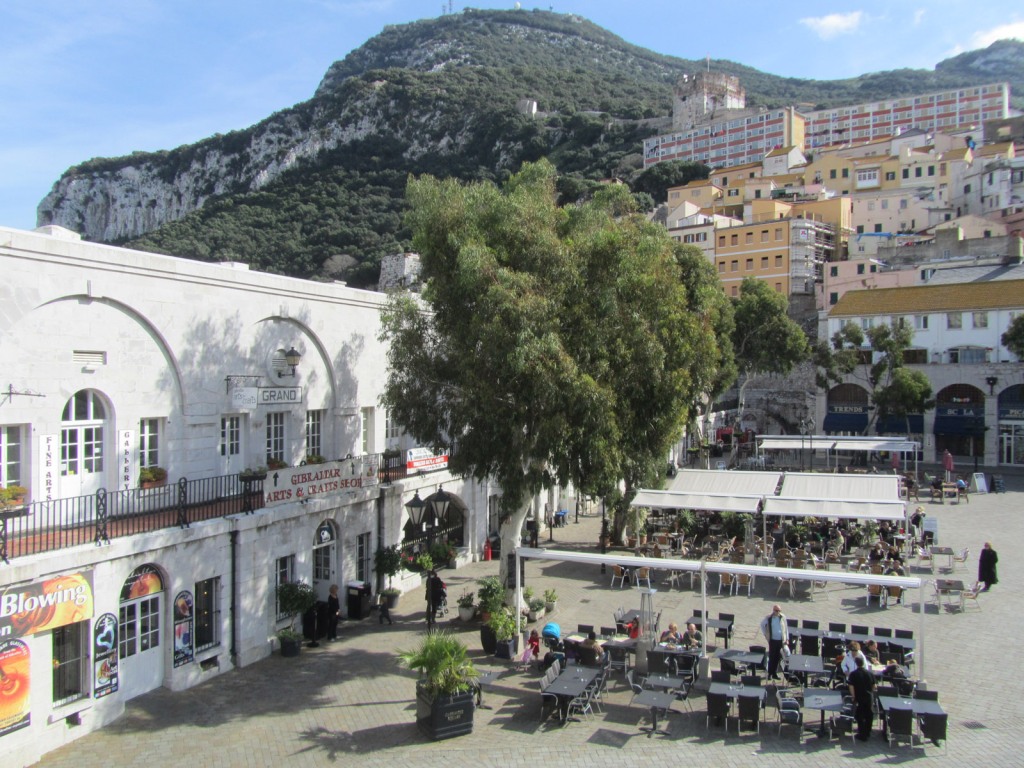

The coat of arms of Gibraltar is laid out on the ground outside HM Government Office on Main Street, adjacent to The Angry Friar where I had lunch on my other visit. The coat of arms dates from 1502, with the key symbolising Gibraltar being the key to Spain or indeed the Mediterranean itself.
While the territory is British, there is much European style influence in the architecture, with pretty street facades like this around town.


Gibraltar’s Parliament building is in the centre of town, on John Mackintosh Square. The present building was completed in 1817, and there are seventeen seats for elected members.
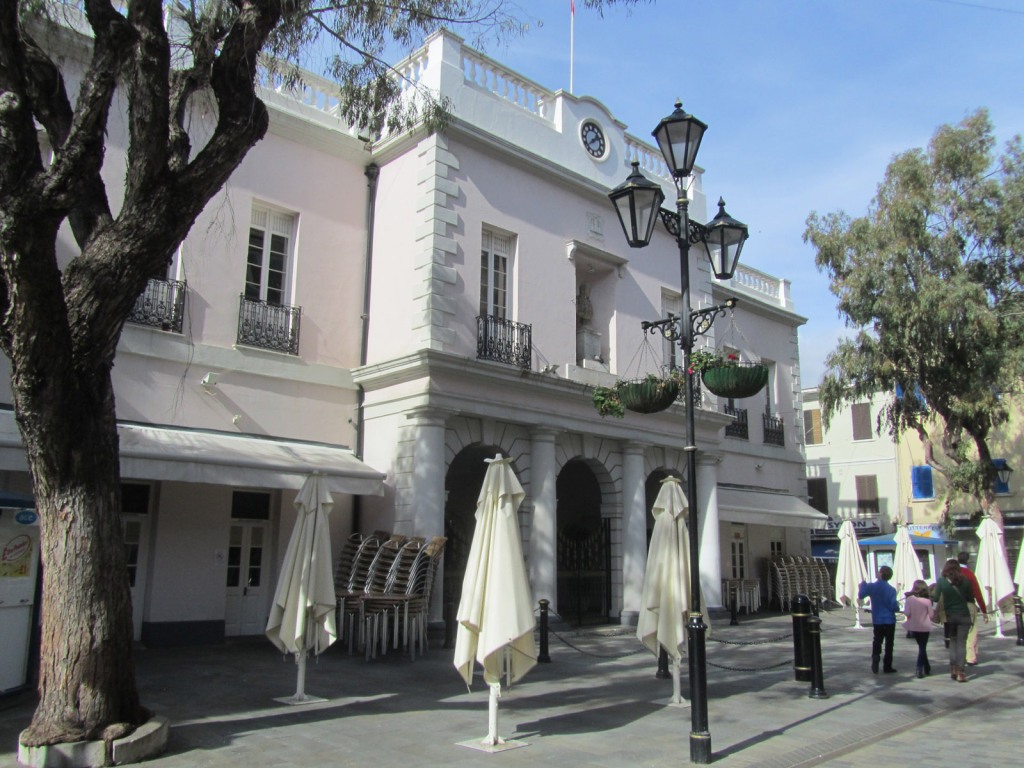
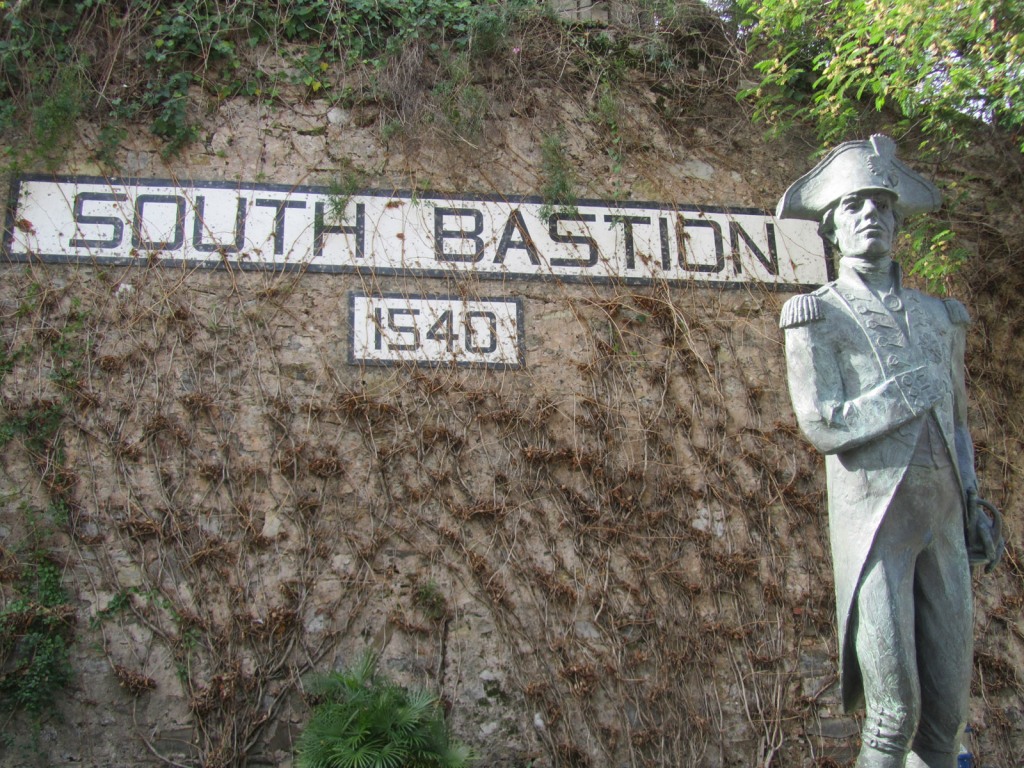
South Bastion, one of the old city walls, and a statue of Lord Nelson keeping watchful guard. Nearby are the Southport Gates.
The Rock Hotel sits part of the way up the rock itself, underneath the cable cars wending their way skyward. It is a gleaming white art-deco building, one of the most famous in the territory.


The Gibraltar Cable Car runs to the top of the rock, although on my visit it shut down just after I took this photo when I tried to buy a ticket, due to high winds. So instead I booked a tour of the rock in a little minibus, which got me up there too.
On the southern tip of Gibraltar at Europa Point is the Ibrahim-al-Ibrahim mosque, built in the modern Gulf-style with Saudi funding in 1997.


The Rock of Gibraltar is pretty solid, but not exclusively so. There are many natural caves, but also siege tunnels such as these on the north face, built for resistance against the Spanish and French siege of the late 1700s. It is possible to walk quite some distance through the tunnels today.
St Michael’s Cave is one of the largest and certainly the most visited cave in Gibraltar. There is documented evidence of its use going back over two thousand years.
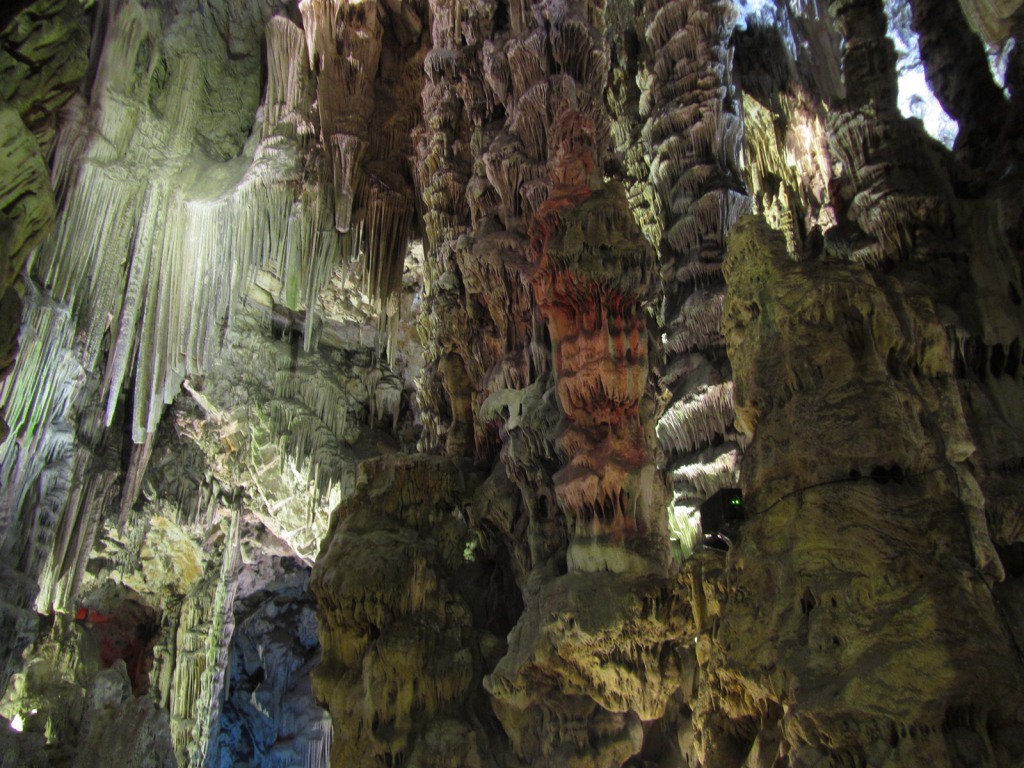

At the top of the rock there are clear views all across the bay of Gibraltar, around to Algeciras and over to Africa. On this particular spot, our new Queen and the Duke of Edinburgh took in the view in 1953.
Gibraltar is famously populated by a colony of barbary apes, mostly found in the higher regions of the rock. Although popular with tourists, they are wild and not to be tangled with. Legend has it that the British will leave only when the apes do.


The apes were unfazed by the certain-death drop to the east, and scampered expertly about the cliff top.
This mama barbary ape was not here for my nonsense. Guarding her baby with a fearsome gaze towards me, I got the message.

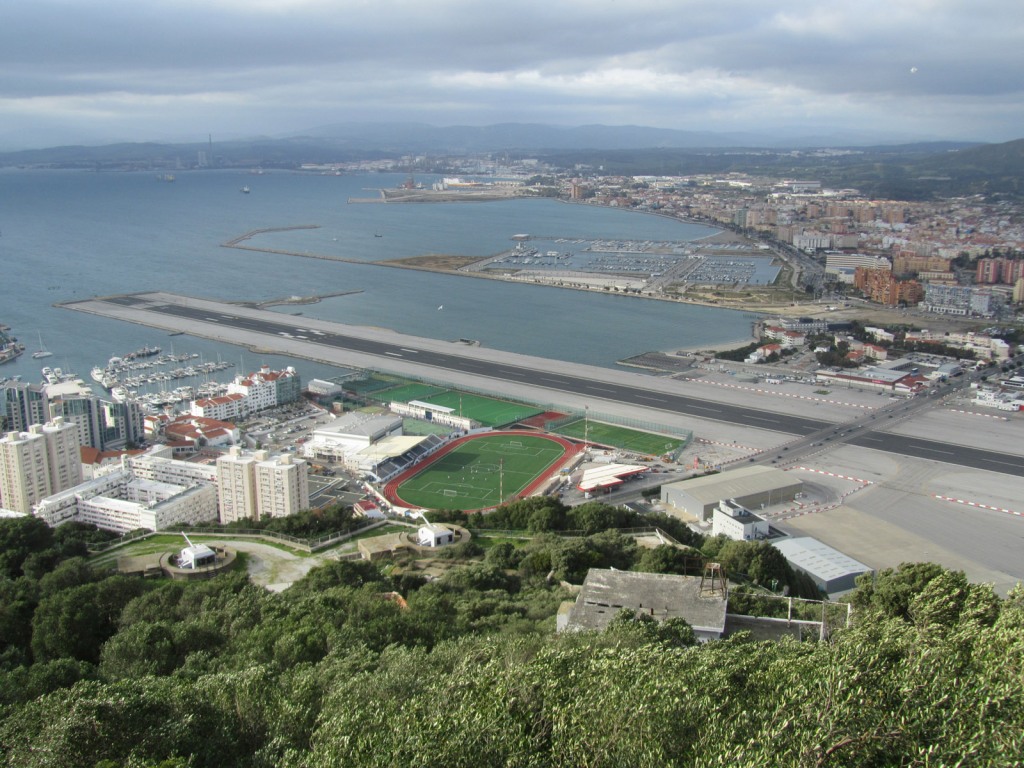
Gibraltar’s airport is squeezed in to the narrow strip of flat land between the rock and the border with La Linea. This makes it within conveniently easy walking distance of much of the town, and a spectacular take-off and landing for passengers. Note the gun turrets still in position on the near hillside.
One of the quirks of the airport is that the main access road in and out of Gibraltar crosses right over the middle of the runway. This was how I walked in and out on both of my visits, with traffic stopped periodically for aircraft movements.

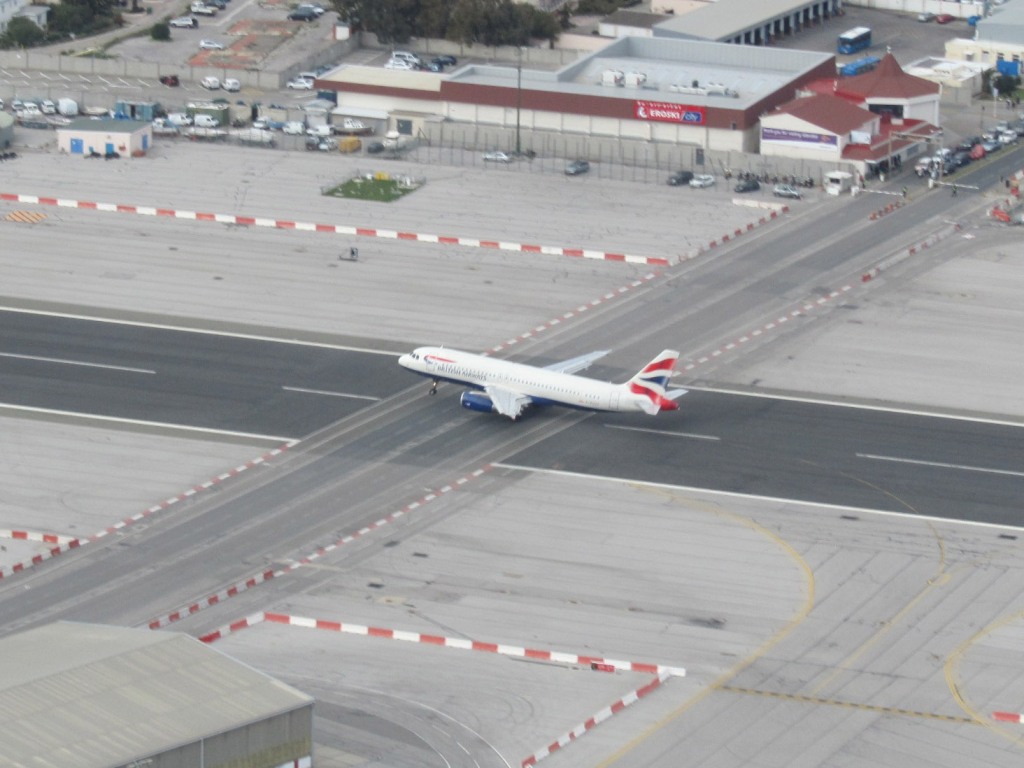
There aren’t many flights from Gibraltar airport, and the regular ones just went to London and Manchester at the time of my visit. A bypass tunnel had started construction in 2008, but took until 2023 to open following a litany of failures and lawsuits. Pedestrians however can still cross the runway directly (after looking both ways).
The Tower of Homage of the Moorish Castle as seen from near the exit to the World War Two tunnels, from which I took the airport photos.


The whole of Gibraltar as seen from the air, having just taken off on my journey back to Scotland. Cheerio!
Created 2015 | Updated 2023
